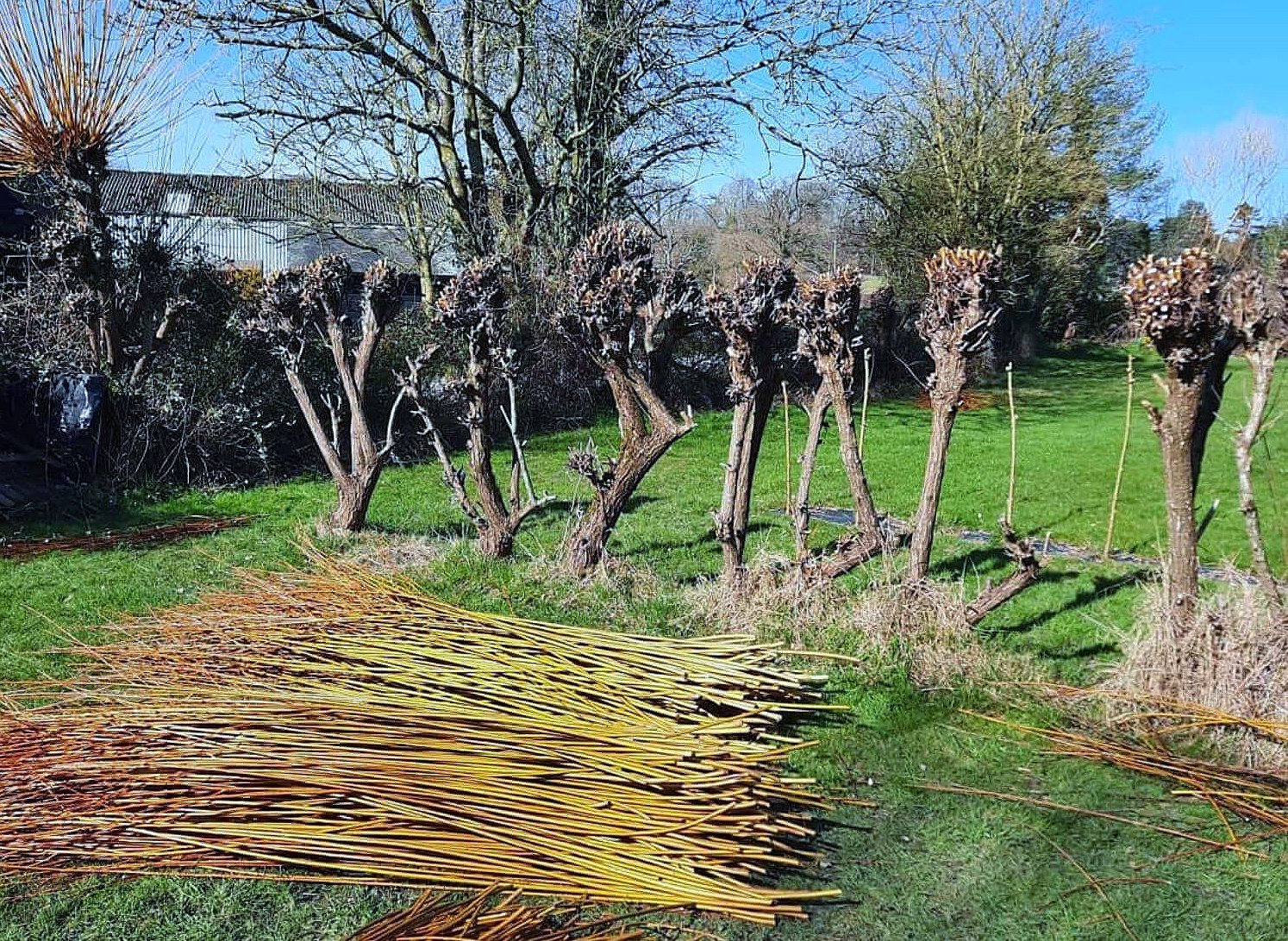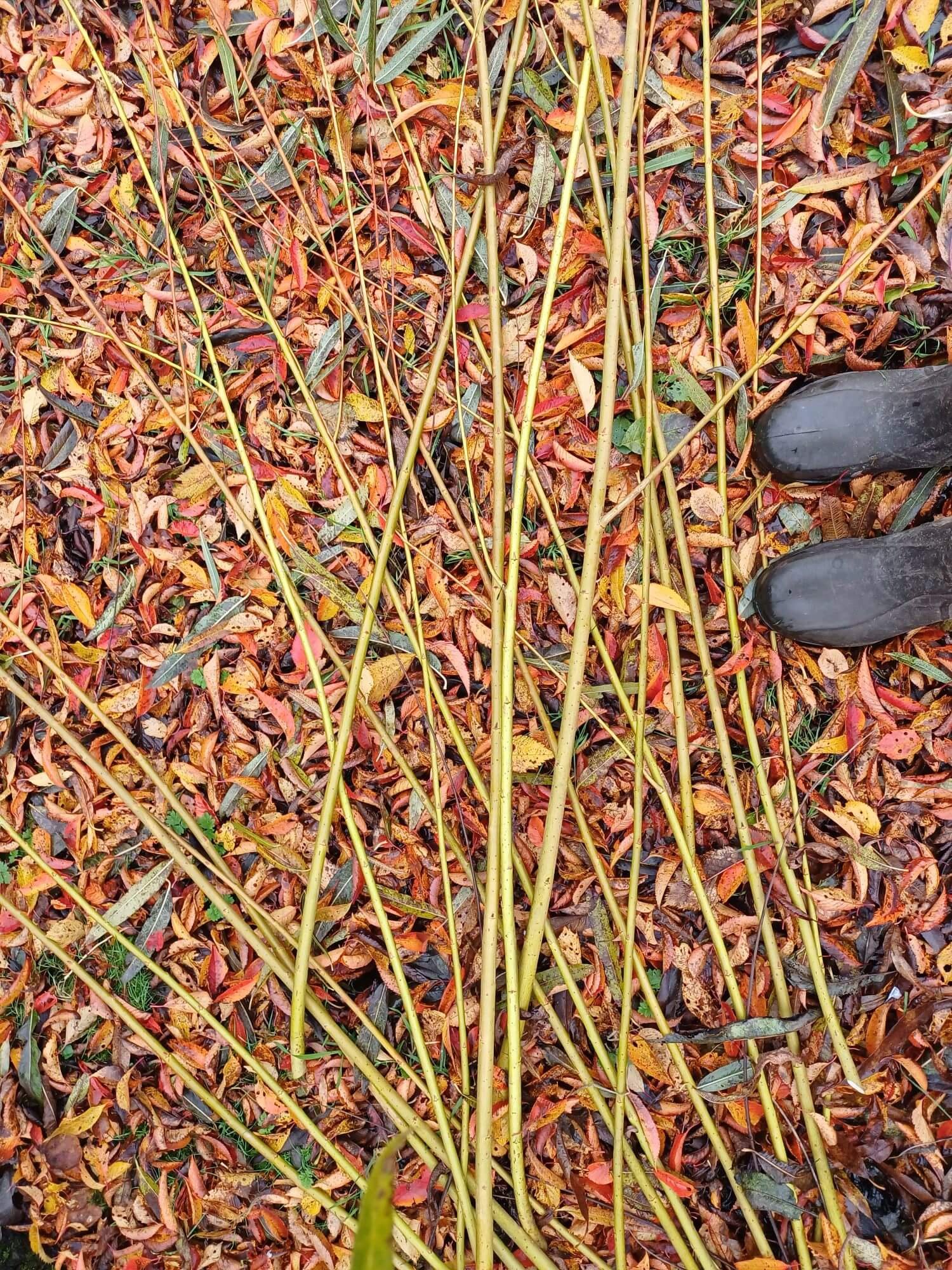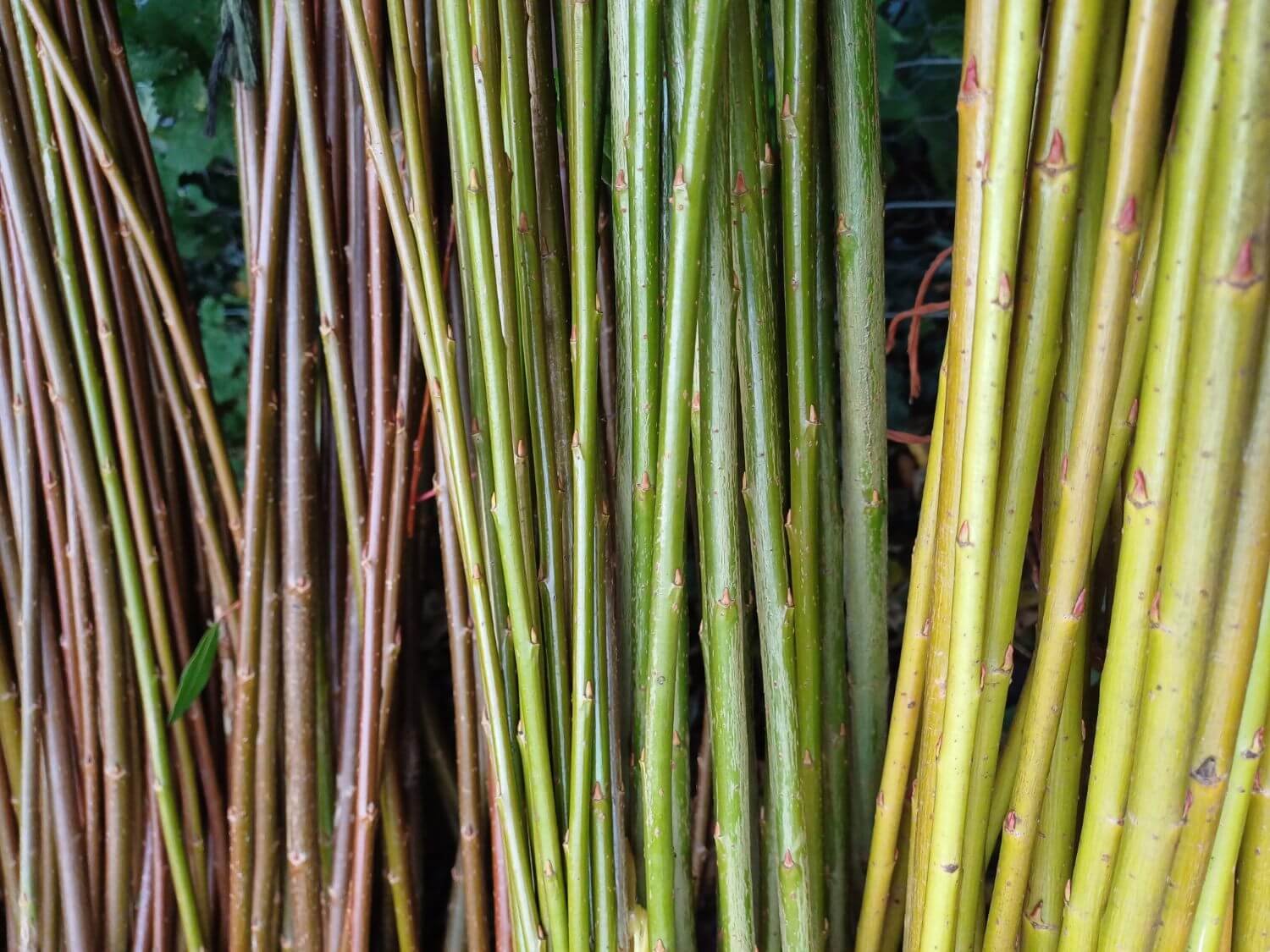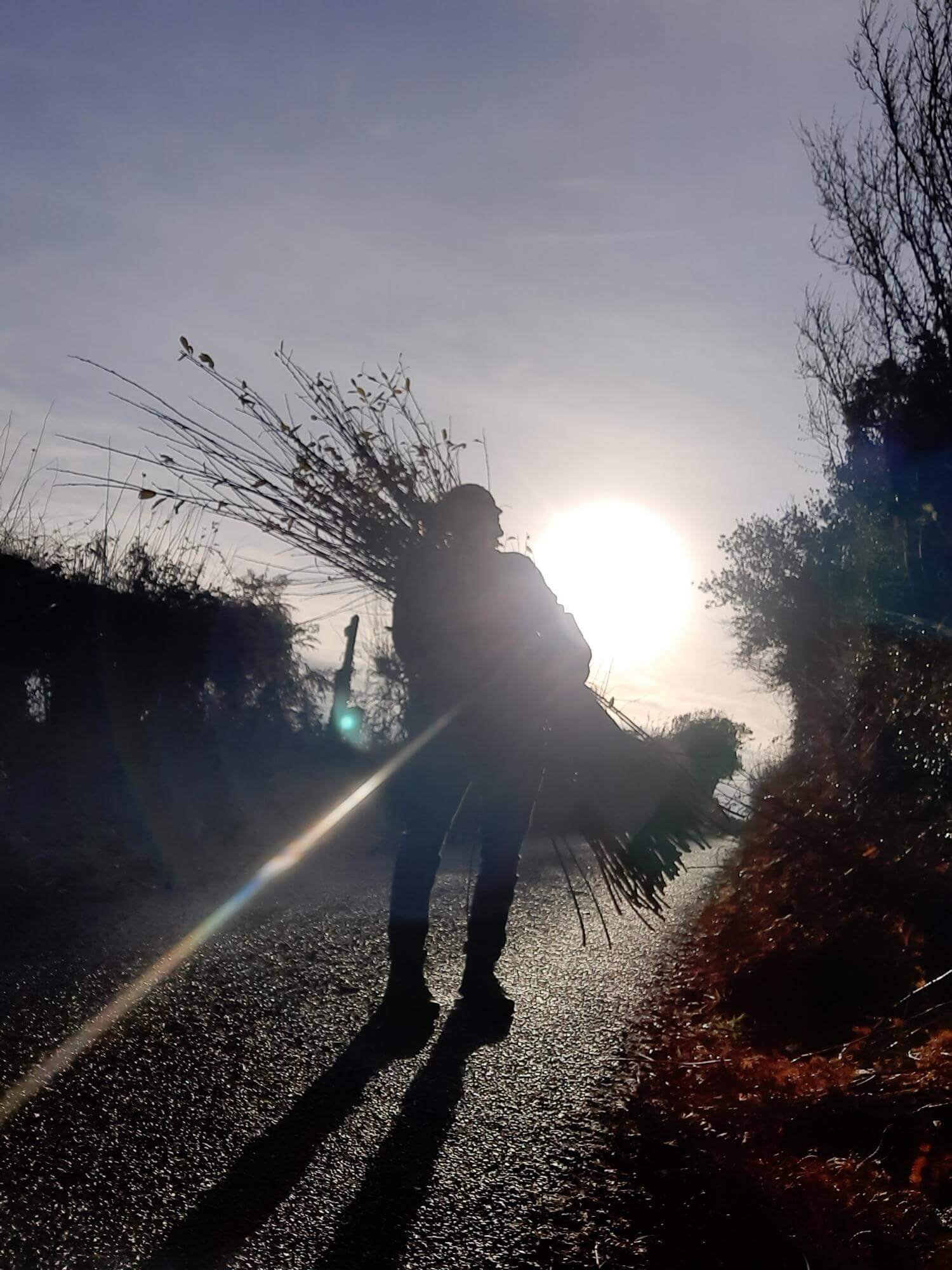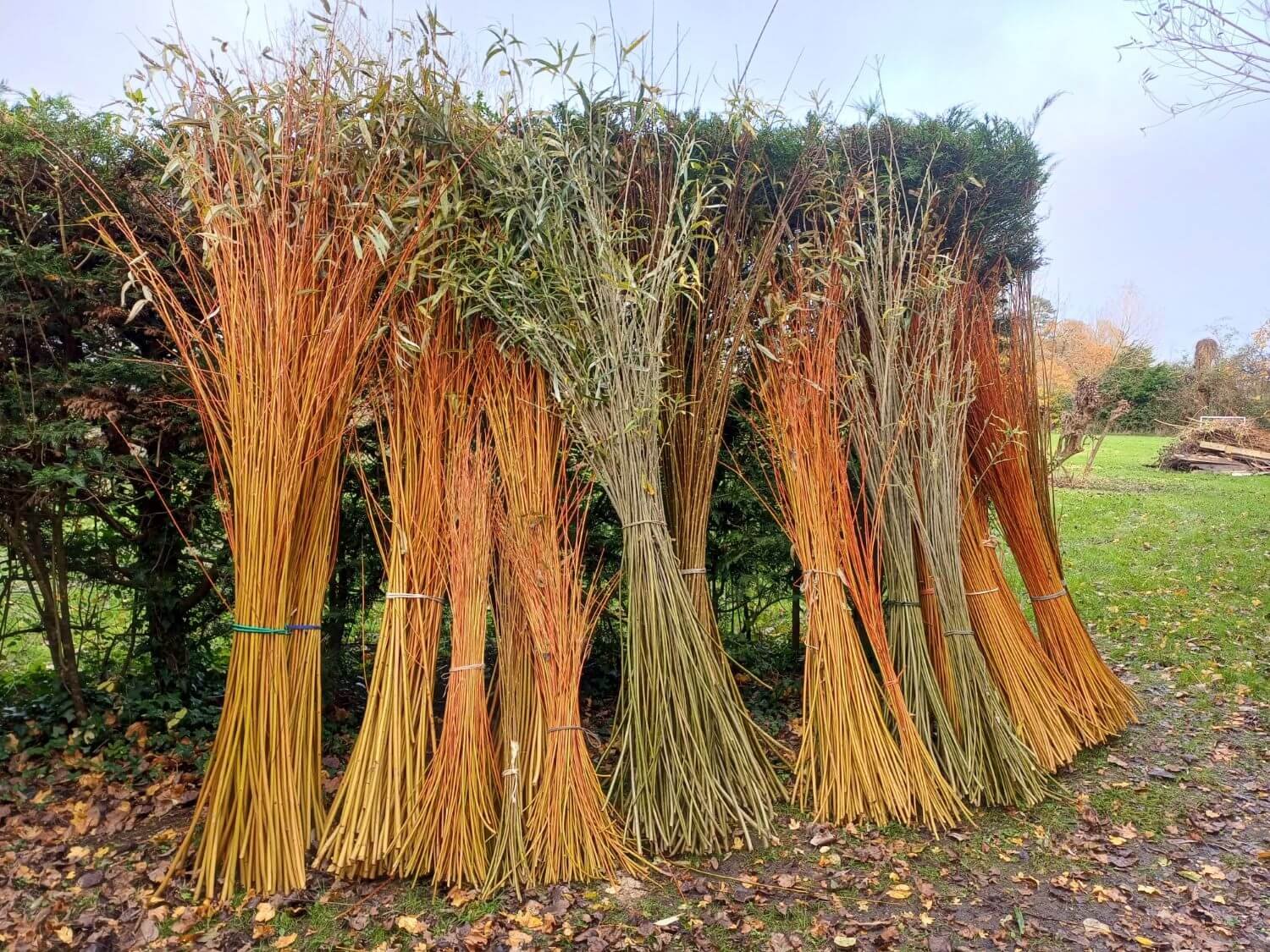Winter Willow Harvest in rural Hampshire
My ambition is to one day have a small amount of land to grow my own willow for basketry and other weaving work. There are many basket makers in the country who do just that, about 2.5 acres seems to be a good size to provide enough willow for making products and teaching a few workshops. I’m working on it, but for now my winter harvest is a little bit more random and convolouted than straighforward cutting from a field.
A beautiful collection of fresh cut willows
In my local area, over the years I have built up a network of willow which I cut every winter. Some I’ve spotted over hedges in peoples gardens, knocked on their door and asked if I can harvest. Other willow is growing as hedging, some are rows of pollards and some are random shelters grown to disguise something. My most precarious harvest, includes gingerly balancing on a tin roof under which a tractor lives. I have to stand carefully balanced with my weight over the scaffold pole structure! There are 3 varieties of willow, one of which is really lovely, and a lot of material, so I’m happy to carefully take the risk…
Well establised willow shelter, grown to disguise the tractor.
Willow being a regenerative plant, will regrow year after year with careful cutting, providing a yearly supply of weaving materials. Generally willow is grown as coppice, which is a technique used by most serious willow growers which involves cutting the rods right down to the ground, causing new shoots to grow rapildy from the base. In most places in the UK coppice needs protecting with deer fencing, otherwise the deer will happily nibble on the stems, taking out the lead shoot and making them branch, therefore unsuitable for basketry.
Pollards can be grown in areas where animals regularly graze, this method cuts the rods back to the main stem or trunk , controlling the height of the growth. Generally I find with pollarding the growth can be thicker and often with a more pronounced curve at the base of the rods. Ideally for fine basket work I’d like the rods to be a straight and slender as possible.
5 year old pollard at Field Farm, Hampshire
It is important to cut in the winter when the plants are dormant and the sap is down. This ensures the plants are ready to get going in the active regrowth season at the end of March. I use good quality, sharp tools to give a clean cut. This year, to save injury and repetative strain in my arm and hand, which has been pretty painful and debilitating - I invested in a pair of electric secateurs. They are brilliant, worth every penny and I haven’t needed to go back to the physio for a few months!
Over the years, I have planted a number of living willow tunnels, domes and structures around the county, which I return to manage yearly. it can be easy to stay inside in the depths of winter, but I love this outdoor work. It is quite physical and often up a ladder for many hours, which makes my feet ache, but I love the interaction with the living plant. Weaving and shaping the structures as much as the plant lets you, and often tweaking quirky shapes to amuse the children who play in them.
I have a general rule that I cut out all stems that are too thick to bend, very thin, short stems and any stems that are growing directly towards me and would snap if I tried to bend them. Then I aim to weave back in as much as I can. Each rod, needs to be woven in at an angle, sloping upwards, traveling infront of and behind the existing structure to anchor it in place. If the rods start sloping downwards, the sap will not be able to travel so that stem will die off.
This memorial was planted as a simple tunnel and dome. Over the years it has become much more of an unspecified creature for the children to play in!
View through the circular window in the roof of the dome.
I am often asked to rescue structures which have been neglected and unmanged. In these situations, often most of the growth is on the top of the stems with very little growing on the sides, the willow will have started to revert into natural tree growth, with a trunk and branches at the top.
Drastic measures are then needed, to cut out a lot of the top growth and replant at the bottom. It may take a few years, careful tending, but it is possible to reinstate a living willow sculpture.
Circular window in the dome allows me to reach and manage the top.
As I write, at the beginning of February, my cutting season is still ongoing. I have a few more structures in local nurserys to tend to, a large classroom dome to plant at a local school and few small projects managing planting projects from last winter. And then I can look forward to all the projects and weaving which will come from the harvest…



